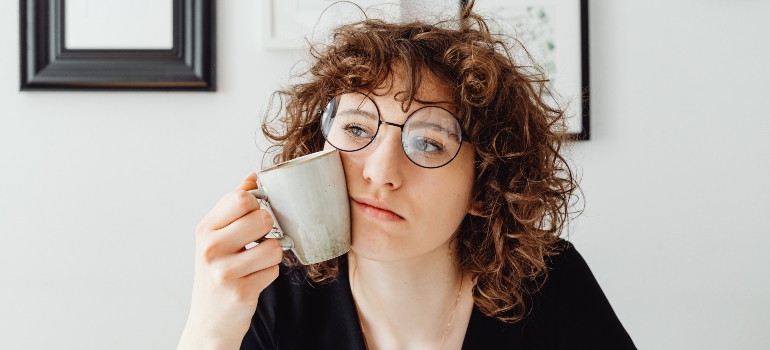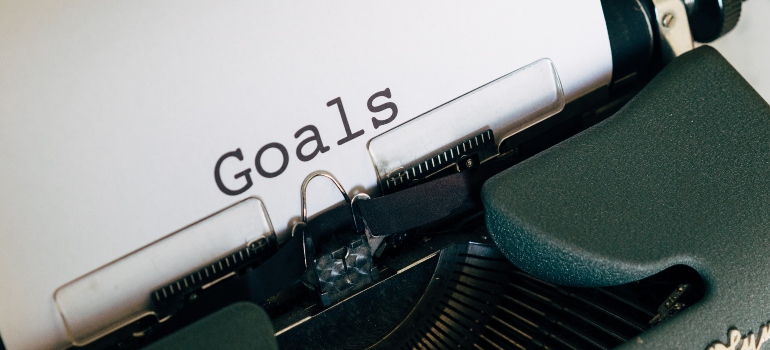Understanding the Difference Between CBT vs. DBT
Behavioral therapies are widely used in addiction treatment. The most popular behavioral therapy is CBT (Cognitive Behavioral Therapy), which forms the basis for numerous other therapy modalities, such as DBT. In a nutshell, CBT is a form of treatment that is proven to be effective in treating a variety of issues, including addiction, depression, anxiety, and many other mental illnesses. A CBT treatment plan for substance abuse is one of the best ways to achieve long-lasting recovery. DBT (Dialectical Behavior Therapy), is a specially adapted version of CBT aimed toward people who tend to experience emotions in a very intense manner. The difference between CBT and DBT is that each therapy type specializes in treating different things. In this article, we will explain all about CBT and DBT, their differences, and how they can be used together for maximum effect.
Jump to Section
What is Cognitive Behavioral Therapy?
CBT is a type of therapy that explores the connection between your thoughts, feelings, actions, and physical sensations. The goal of the therapy is to help you deal with your current issues by breaking down your problems into smaller parts and changing your negative thought patterns into positive ones. CBT is proven to help with various mental health issues, including:
- Phobias
- Panic disorder
- Psychosis
- Schizophrenia
- Anxiety

Cognitive Behavioral Therapy is also extremely effective in addiction treatment. This is why you can undergo CBT in almost every drug rehab center Princeton NJ has to offer. The reason why CBT is different from many other forms of therapy is that CBT is heavily backed by scientific evidence, as its methods have been refined through decades of use. In most cases, CBT is at least as effective as most other forms of psychotherapy and psychiatric medications.
Theoretical basis behind CBT
CBT is based upon two main principles:
- People that suffer from psychological problems can always learn how to handle them better. By doing so, they will relieve their symptoms and achieve a happier life.
- All psychological problems have a connection with learned patterns of unhelpful behavior and unhelpful ways of thinking. By changing the way you think through CBT, you will be able to remove that connection and manage your problems much better.
Furthermore, the reason why CBT is so effective in addiction treatment is the fact that it allows the addicted person to fully understand why they act or feel a certain way. By gaining this understanding, you will realize how your feelings can bring you to substance use and, more importantly, how they can get you out of it. This is one of the most important reasons why you might want to ensure that your drug rehab center Edison NJ is capable of providing you with this form of treatment. The fact that CBT can help you change what you think and feel is invaluable in addiction treatment.

Techniques used in CBT
CBT utilizes dozens of techniques and tools to help its patients. The best part of this treatment modality is that it can be customized to your specific needs. Some techniques, however, are more commonly used than others. The essential CBT techniques include:
- Journaling
- Cognitive restructuring
- Interoceptive exposure
- Progressive muscle relaxation
- Exposure and response prevention
Other techniques include “playing the script until the end”, “unraveling cognitive distortions”, guided discovery, exposure therapy, etc. It is always in your best interest to find a treatment center that has the capability of providing you with as many options as possible. In our Newburgh rehab center, for example, we can provide you with a treatment plan that incorporates any of the abovementioned options.
The best way to start to understand the difference between CBT and DBT is to take a look at the essential CBT techniques in a bit more detail.
Journaling
The journaling technique is all about gathering information about your thoughts and moods. This is essential for identifying thought patterns and emotional tendencies alike. Journaling will help you describe them, change them, adapt them, as well as help you cope with them.

Cognitive restructuring
Once the cognitive distortions have been identified, CBT aims to restructure them. This is an essential part of the CBT process, where you will learn how to change the way you think about yourself.
Interoceptive exposure
Interoceptive exposure is a technique that is primarily used to treat anxiety and/or panic. This technique involves exposure to certain bodily sensations in order to activate any unhelpful beliefs associated with them. This process will allow you to learn new things about the sensations and make you realize that your panic symptoms are not as dangerous as they might initially appear.
Progressive muscle relaxation
If you have ever practiced mindfulness, you will be familiar with this one. Progressive muscle relaxation is a technique where you relax one muscle group at a time, slowly reaching a full state of relaxation.
Exposure and response prevention
While exposure and response prevention can be useful in a variety of situations, it is primarily used for people who suffer from OCD (Obsessive Compulsive Disorder). In a CBT setting, this technique is used to expose you to any effects that may trigger your OCD, but in a controlled setting.
CBT for addiction
The reason why CBT is one of the most effective treatments for substance abuse is that it allows you to correct your maladaptive behavioral patterns. Furthermore, CBT will help you enhance your motivation for change, develop healthy coping skills, and prevent relapse. In addition, CBT will help you create healthy coping and behavioral strategies and can be extremely helpful in avoiding addiction triggers. This is one of the main reasons why our drug rehab Middletown NY center always recommends CBT as one of the core components of addiction treatment programs.

However, CBT is not the only therapy type that might help you achieve lasting recovery. Every person is unique, after all. If you want to achieve the best results, you might want to combine CBT with other treatment modalities, such as DBT.
What is Dialectical Behavior Therapy?
Dialectical Behavior Therapy (DBT) is based on the same principles as CBT but with a few key differences. The word “Dialectical” basically means “to combine opposite ideas”. The primary goal of DBT is to help people accept their lives and their behaviors as they are, and then change them for the better.
Theoretical basis behind DBT
DBT is based on three major theoretical frameworks:
- Behavioral science biosocial model
- The mindfulness practice of Zen Buddhism
- Philosophy of dialectics
The behavioral science biosocial theory explores and explains how borderline personalities develop. Basically, the theory states that some people are born with a natural predisposition toward being emotionally vulnerable.
Zen Buddhism mindfulness techniques are used to achieve a certain presence of mind that focuses on the here and now. This allows the DBT patients to assess their current situation objectively and calmly.
Lastly, dialectics philosophy states that people need to accept the parts of themselves that they don’t like. Dialectics is also used to enhance motivation and provide encouragement to change the parts that are unhelpful.
Techniques used in DBT
Similar to CBT, DBT utilizes dozens of different techniques to help its patients. The techniques themselves depend on the unique situation of the patient. However, some techniques are more general than others and are used in a wider range of situations. Here are the three most common ones:
- Emotional regulation
- Mindfulness practice
- Building stress tolerance

Emotional regulation is probably the most important DBT technique. This technique involves a very structured approach to emotions, from emotion identification to reducing the negative effects of strong emotions. Furthermore, this technique will also help you regulate your emotions, reduce your vulnerability to reactive behaviors, and increase your mindfulness.
Speaking of mindfulness, this is a concept that practically every behavioral therapy has in common. The difference between CBT and DBT is how they approach mindfulness. In DBT, the goal of mindfulness practice is to enable you to deal with strong emotions, while CBT utilizes mindfulness more to identify unhelpful thoughts.
Lastly, DBT relies heavily on building stress tolerance in its patients. Unlike CBT, DBT admits that change might be impossible in some cases and helps the patients to accept the inevitable in a calmer fashion.
DBT for addiction treatment
The greatest difference between CBT and DBT when it comes to addiction treatment is that DBT is usually utilized when an addicted person has co-occurring mental health disorders such as BPD. Therefore, DBT is not often used in drug and alcohol treatment centers in Pennsylvania to treat addiction on its own. Rather, it is usually used to complement existing treatment (which usually involves CBT).
The difference between CBT and DBT
CBT and DBT might have a fair share of similarities but they are two different treatment modalities. There are quite a few differences between the two, including:
- Goals
- Philosophies
- Types of sessions
- Target population
The main difference, however, is that CBT focuses on changing unhelpful thought and behavior patterns while DBT focuses on regulating intense emotions. This allows the two to co-exist within the same treatment program, as they essentially treat two very different things. With that in mind, let’s take a look into some of the other differences.
CBT and DBT have different goals
Another difference between CBT and DBT is that they each have unique goals. CBT is inherently more goal-oriented while DBT does not usually have direct goals. The primary purpose of DBT is to help patients manage their emotions, regulate their destructive behaviors, and accept themselves for who they are.

Philosophies behind CBT and DBT are different
CBT is a logic-focused type of therapy while DBT is focused on how you interact with yourself and others. DBT places a much higher emphasis on mindfulness while CBT emphasizes critical thinking and developing healthier behaviors.
Types of sessions
In general, CBT sessions are much shorter than DBT ones. Furthermore, CBT as a whole takes less time to complete than DBT. On average, CBT sessions will last about a few weeks while DBT sessions may span the course of several months. In addition, DBT usually involves group therapy while CBT focuses more on individual therapies.
Target population
Due to the difference between CBT and DBT, their target populations are also different. CBT is usually the most effective option for people who are struggling with depression, phobias, anxiety disorders, PTSD, and substance use disorders. On the other hand, DBT is primarily used for treating borderline personality disorders, self-harm disorders, eating disorders, and similar.
When it comes to substance addiction, however, the best approach is to combine the two therapies together. This is due to the fact that addiction is an extremely complicated disease, one that usually features one or more co-occurring disorders.
The benefits of using CBT and DBT together
When dealing with addiction, chances are that you are going to experience strong emotions. This can make DBT invaluable in attaining a lasting recovery. Furthermore, since both therapy types share most of the key principles such as mindfulness, they complement each other in a great way. Both CBT and DBT will help the patient increase their self-awareness and form healthier habits.
The greatest benefit of using both therapy types in the same treatment program is that you will be able to work on all of your issues instead of only some of them. By using both CBT and DBT in addiction treatment, you will be able to achieve long-lasting recovery and minimize the chances of relapse.
Even if you understand the difference between CBT and DBT, overcoming addiction can be extremely difficult but is far from impossible. However, trying to overcome your substance use disorder on your own can be even more difficult. Therefore, the most important thing you can do is to seek help. At Little Creek Recovery, we specialize in helping our clients overcome addiction in a comfortable manner, allowing them to return to their normal lives as soon as possible. Contact us today and we will be glad to help you achieve lasting recovery!